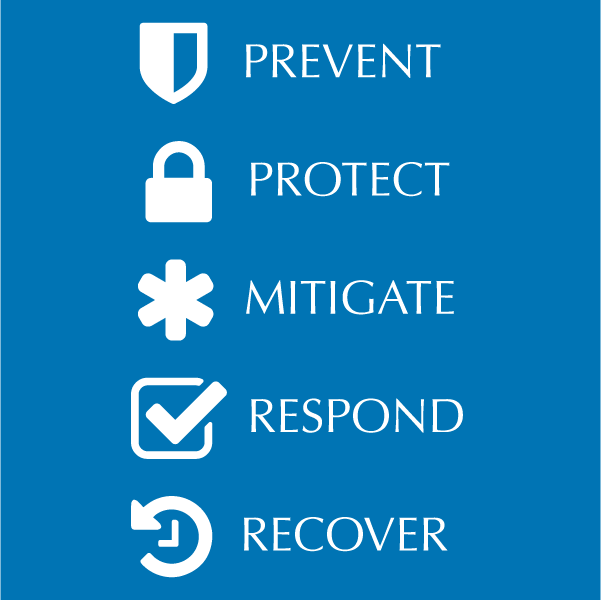Share Your Feedback
The REMS TA Center seeks your feedback to ensure that the Website is continually enhanced to meet your needs.
National Preparedness
In planning for school emergencies, educators and their community partners (e.g., law enforcement, fire officials, local mental and public health authorities) become one small but significant part of the national planning community, which must manage a myriad of safety challenges. For a vision to guide their work, educators, including those at the district level, can look to the National Preparedness System, which outlines a process by which we all can achieve preparedness. As a reflection of the National Preparedness System, the School Guide presents the following preparedness mission areas:
-
Prevention
The capabilities necessary to avoid, deter, or stop an imminent crime or threatened or actual mass casualty incident. Prevention is the action districts and schools take to prevent a threatened or actual incident from occurring.
-
Protection
The capabilities to secure districts and schools against acts of violence and man-made or natural disasters. Protection focuses on ongoing actions that protect students, teachers, staff, visitors, networks, and property from a threat or hazard.
-
Mitigation
The capabilities necessary to eliminate or reduce the loss of life and property damage by lessening the impact of an event or emergency. In this document, “mitigation” also means reducing the likelihood that threats and hazards will happen.
-
Response
The capabilities necessary to stabilize an emergency once it has already happened or is certain to happen in an unpreventable way; to establish a safe and secure environment; to save lives and property; and to facilitate the transition to recovery.
-
Recovery
The capabilities necessary to assist districts and schools affected by an event or emergency in restoring the learning environment.
Emergency management officials and emergency responders who engage with districts and schools are familiar with this terminology. Although the mission areas are not strictly sequential, they generally align with one or more of the three time frames associated with an incident: before, during, and after.
Most prevention, protection, and mitigation activities occur before an incident, although these three mission areas have ongoing activities that can occur throughout an incident. Response activities occur during an incident, and recovery activities can begin during an incident and occur after an incident. To help avoid confusion over terms and to allow for ease of reference, this Guide uses “before,” “during,” and “after.”
As districts and schools plan for and execute response and recovery activities through their EOPs, they should use the concepts and principles outlined in the National Incident Management System (NIMS). NIMS is the United States’ single, comprehensive system for managing domestic incidents, which enables the seamless transition and integration of additional response agencies during an incident. One element of NIMS is the Incident Command System (ICS), which provides a standardized approach for incident management, regardless of cause, size, location, or complexity. By using ICS during an incident, districts and schools are able to work more effectively with their community partners (e.g., first responders). For more information on ICS and NIMS, please visit the National Incident Management System (NIMS).
While some of the vocabulary, processes, and approaches discussed in this Guide may be new to the education community, they are critical. The vocabulary, processes, and approaches are critical to the creation of emergency management practices and plans that are integrated with the efforts of first responders and other key stakeholders, and that do everything possible to keep children safe. If a district and its schools have an existing plan, revising and adapting the plan using the principles and process described in this Guide will help ensure alignment with the terminology and approaches used across the nation.



